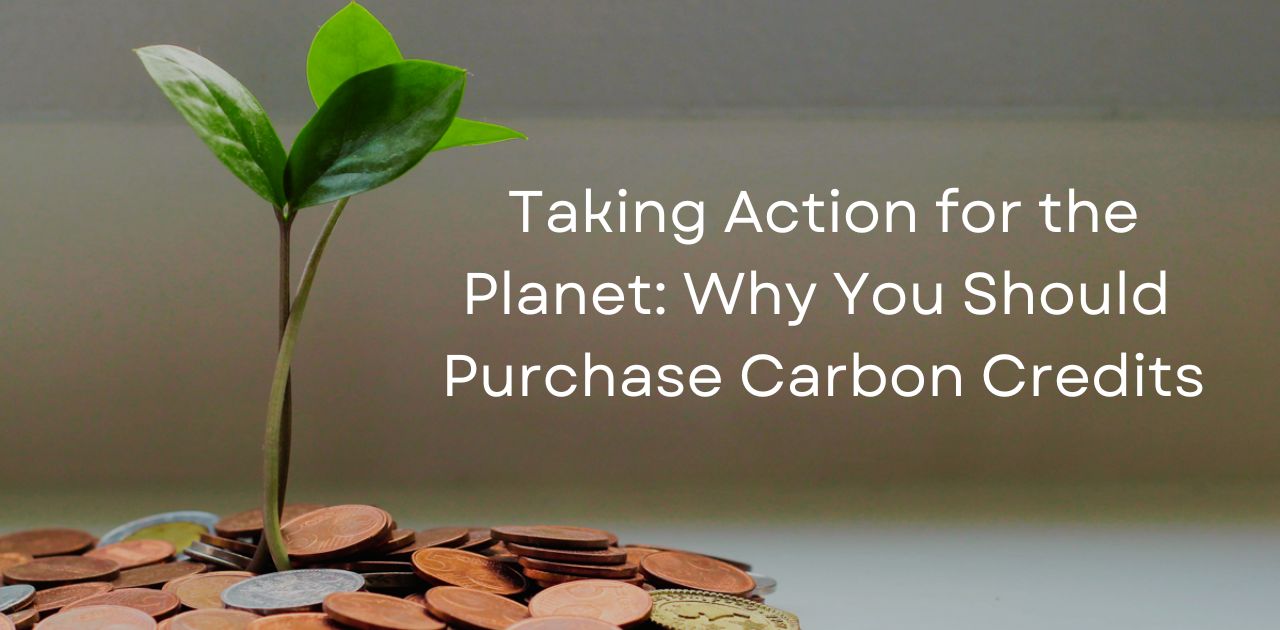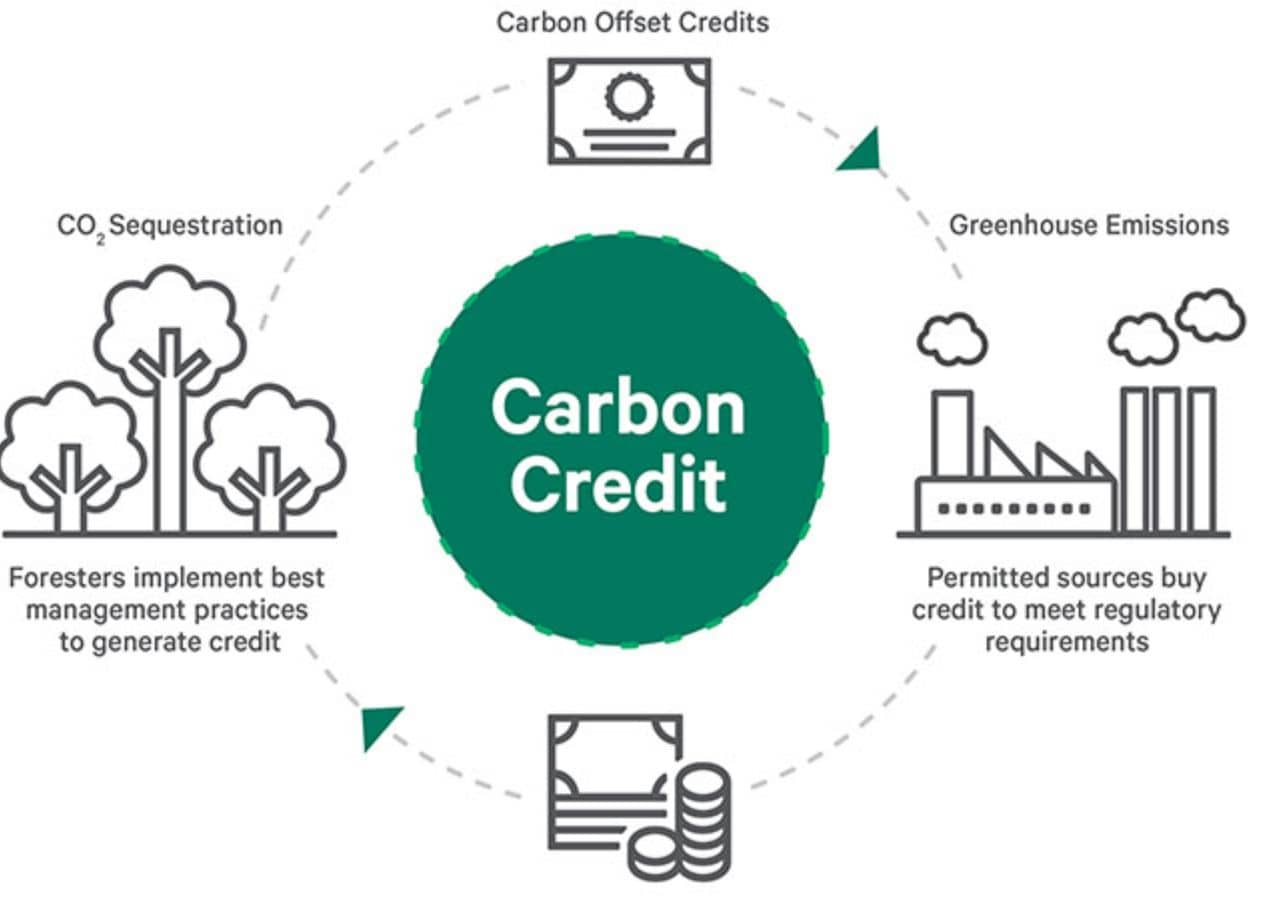Taking Action for the Planet: Why You Should Purchase Carbon Credits

In today's world, taking action to protect our planet is more important than ever. One powerful way to make a difference is by purchase carbon credits. These credits enable individuals and businesses to offset their carbon footprint and contribute to the fight against climate change.
By investing in carbon credits, you can actively participate in environmental conservation and support projects that reduce greenhouse gas emissions. This blog will explore the reasons why purchase carbon credits is a crucial step towards a sustainable future. From understanding the benefits to exploring the impact on our planet, we will delve into the significance of taking action and why you should consider purchase carbon credits.
Understanding Carbon Credits
Carbon credits are an essential component in the fight against climate change. They provide a mechanism to measure and offset greenhouse gas emissions, helping individuals and businesses reduce their carbon footprint. By purchase carbon credits, you can actively contribute to the preservation of our planet's environment. In this section, we will delve deeper into the concept of carbon credits, how they are measured and verified, and the various types of carbon credit projects available.
First and foremost, let's define what carbon credits are. Carbon credits represent a unit of measurement that quantifies the reduction, avoidance, or removal of greenhouse gas emissions. Each carbon credit typically corresponds to one metric ton of carbon dioxide equivalent (CO2e) that has been offset. These credits are generated through projects that aim to reduce or remove emissions from the atmosphere, such as renewable energy initiatives, reforestation programs, or energy efficiency projects.
Measuring and verifying carbon credits is a crucial aspect of their credibility and transparency. Rigorous methodologies and standards have been established to ensure the accurate quantification of emissions reductions. These methodologies consider factors like emission baselines, additionality, and the duration of the project. Additionally, independent third-party organizations, known as carbon offset verifiers, play a critical role in verifying the authenticity and quality of carbon credits.
There are various types of carbon credit projects available, each addressing different sectors and sources of emissions. Renewable energy projects involve the generation of clean energy from sources like solar, wind, or hydro, replacing fossil fuel-based energy generation. Forest conservation and reforestation projects focus on preserving existing forests or planting new trees to absorb carbon dioxide from the atmosphere. Energy efficiency projects aim to reduce energy consumption in buildings, transportation, and industrial processes. Additionally, there are also agricultural projects that employ sustainable farming practices to reduce emissions and enhance carbon sequestration in the soil.

By diversifying the types of carbon credit projects, individuals and businesses have the opportunity to support initiatives that align with their values and priorities. Whether it's investing in renewable energy, promoting sustainable agriculture, or preserving natural ecosystems, purchase carbon credits allows you to make a tangible impact on reducing greenhouse gas emissions.
In conclusion, understanding carbon credits is essential in realizing their potential as a powerful tool for combating climate change. With a clear grasp of their definition, measurement, verification process, and various project types, individuals and businesses can confidently purchase carbon credits and actively contribute to a more sustainable future. By supporting these initiatives, we can collectively work towards a world with reduced greenhouse gas emissions and a healthier planet.
Environmental Impact of Purchasing Carbon Credits

Purchasing carbon credits has a significant environmental impact, making it an effective strategy in the fight against climate change. By investing in carbon credits, individuals and businesses can contribute to the reduction of greenhouse gas emissions, support global climate change mitigation efforts, and protect biodiversity and ecosystems. In this section, we will explore the environmental benefits of purchase carbon credits in more detail.
One of the key environmental benefits of purchase carbon credits is the reduction of greenhouse gas emissions. Carbon credits are generated through projects that actively reduce or remove emissions from the atmosphere. These projects can include renewable energy initiatives, energy efficiency improvements, or sustainable land management practices. By purchasing carbon credits, you are supporting these projects and helping to offset your own emissions, ultimately leading to a net reduction in greenhouse gas emissions.
In addition to reducing emissions, purchase carbon credits also contributes to global climate change mitigation efforts. The collective impact of individuals and businesses purchase carbon credits can significantly contribute to achieving international climate goals and targets. By supporting projects that actively reduce emissions, carbon credits play a crucial role in transitioning to a low-carbon economy and reducing our dependence on fossil fuels.
Furthermore, purchase carbon credits can help protect biodiversity and ecosystems. Many carbon credit projects involve activities such as reforestation, forest conservation, and sustainable land management. These projects not only sequester carbon dioxide from the atmosphere but also provide habitats for wildlife, protect watershed areas, and enhance overall ecosystem health. By investing in carbon credits, you are indirectly supporting these conservation efforts and helping to preserve the rich biodiversity of our planet.
It is important to note that purchase carbon credits should not be seen as a standalone solution to climate change. It should be complemented by other sustainable practices, such as energy conservation, waste reduction, and the use of renewable energy sources, alongside the possibility of using carbon-negative materials and utilizing them to produce everyday tools. However, purchase carbon credits can serve as a valuable tool in an individual or organization's broader sustainability strategy.
In conclusion, purchase carbon credits has a positive environmental impact. It contributes to the reduction of greenhouse gas emissions, supports global climate change mitigation efforts, and helps protect biodiversity and ecosystems. By actively participating in carbon offset programs, replacing traditional plastic items with Biobased PP materials, individuals and businesses can make a tangible difference in combating climate change. and create a more sustainable future.
Challenges and Future Directions

While purchasing carbon credits offers significant environmental benefits, there are also challenges and considerations that need to be addressed. In this section, we will explore the challenges associated with purchase carbon credits and discuss the future directions of this market. One potential criticism of purchase carbon credits is the concern over the effectiveness and transparency of the projects they support. It is important to ensure that the projects generating carbon credits are genuinely contributing to emission reductions and have reliable verification processes in place. Addressing this concern requires robust monitoring and reporting systems, as well as third-party verification to ensure the integrity of carbon credit projects.
Another challenge is the need for increased standardization and regulation within the carbon credit market. As the demand for carbon credits grows, it becomes crucial to establish consistent methodologies for calculating carbon offsets and verifying their impact. Standardization and regulation can help enhance trust and credibility within the market, ensuring that carbon credits deliver real and measurable emissions reductions.
However, despite these challenges, the future of carbon credit markets looks promising. Innovations and advancements in the field are constantly improving the efficiency and effectiveness of carbon credit projects. For instance, technology-driven solutions such as blockchain and satellite monitoring are being explored to enhance transparency and traceability within the market. These innovations can provide more accurate data on emissions reductions and enable greater confidence in the carbon credit process.
Furthermore, the future of carbon credits extends beyond just offsetting emissions. The concept of "additionality" is gaining importance, which means that carbon credit projects should go beyond business-as-usual practices and deliver additional benefits to society and the environment. This could include projects that create jobs, improve livelihoods, or promote sustainable development alongside emissions reductions.
Or if it is not possible to buy carbon credits, businesses can change the production line by buying inputs with carbon-negative materials to limit emissions, with the pioneer of this material AirX company has and are producing negative resin particles as well as the generated products. This reduces emissions when using such materials and inputs.
In conclusion, while challenges exist, the future of purchase carbon credits is promising. Addressing criticisms and concerns, establishing standardized methodologies, and embracing innovations will enhance the credibility and effectiveness of the market. Moreover, the future of carbon credits extends beyond emissions reductions, with a focus on delivering additional benefits to society and the environment. By purchase carbon credits and supporting these advancements, individuals and organizations can play an active role in addressing climate change and promoting sustainable development.
Learn more: Buying Carbon Credits A Guide for Businesses Committed to Climate Action
Contact us
AirX is the world's first carbon-negative bio-material made from coffee grounds manufacturer.
We specialize in producing bio-based composites using recycled carbohydrates derived from by-products such as coffee grounds, coconut husk, husk, and bamboo. Our goal is to promote sustainability through the use of eco-friendly materials.
We are always here to help and provide the best service possible. If you have any questions or would like to receive advice and feedback directly from our sales staff, please do not hesitate to contact us. You can reach us through:
- Whatsapp: +84 969 742 950
- Email: [email protected]
We look forward to hearing from you!

